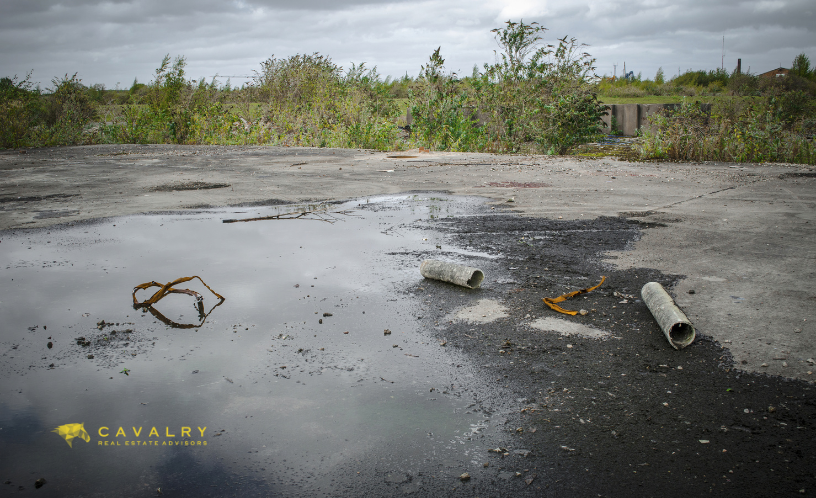The Love Canal tragedy is one of the most appalling environmental tragedies in American history. It is also perhaps the most famous example of what would later be termed a “brownfield” property. While it’s worth reading the full extent of the situation in the previous link, here are the basics. A chemical company covered a hazardous waste dump with dirt and sold it off for development. A housing tract was then built over the site. Then, tragedy struck.
In 1977, melting snow after a blizzard forced chemical wastes from the abandoned excavation site to the surface. This contaminated groundwater, which then migrated through surface soils in backyards, basements, and sewer systems and nearby creeks. This contamination led to a public health crisis that caused a wide-range of issues such as birth defects and cancer. Following evacuation of residents, the site was declared what we now call a “brownfield.” These are properties that require environmental cleanup.
Two decades later, in 1995, the EPA launched the Brownfields and Land Revitalization Program. This program encourages cleanup and reuse of these brownfield properties by providing funding for brownfield assessment, cleanup, revolving loans, environmental job training, technical assistance, and research.1 The program defines a brownfield site as a “property, the expansion, redevelopment, or reuse of which may be complicated by the presence or potential presence of a hazardous substance, pollutant, or contaminant”.2 Today, there are nearly 450,000 brownfield sites, or contaminated properties, in the United States alone!
While the EPA didn’t launch the Brownfield Program for almost 20 years after the Love Canal tragedy, this program has, as of 1/1/2023, successfully made over 10,000 previously contaminated properties and 150,000 acres ready for reuse and created almost 200,000 jobs.3
While no one wants to be faced with such a situation, Cavalry has expertise in navigating the federal Brownfield Program and related state Volunteer Cleanup Programs. We have helped clients create better futures for their communities and investments – and would love to help you do the same. If you are in the process of brownfield redevelopment, we can identify, value, and secure applicable ad valorem and non-ad valorem tax-related abatements, credits, or incentives where available for any owned, acquired, or developed properties. Contact us anytime – we’re always ready to help.
[1] Types of EPA Brownfield Grant Funding | US EPA
[2] PLAW-107publ118.pdf (congress.gov)
[3] Brownfields Program Accomplishments and Benefits | US EPA
